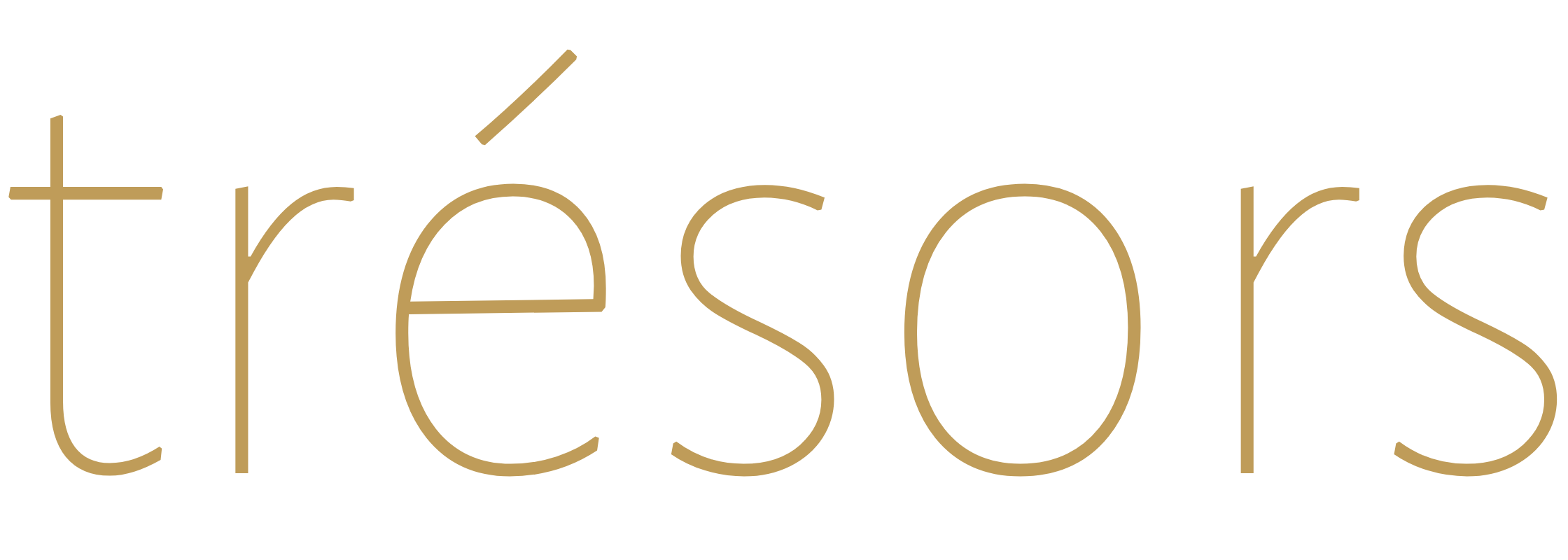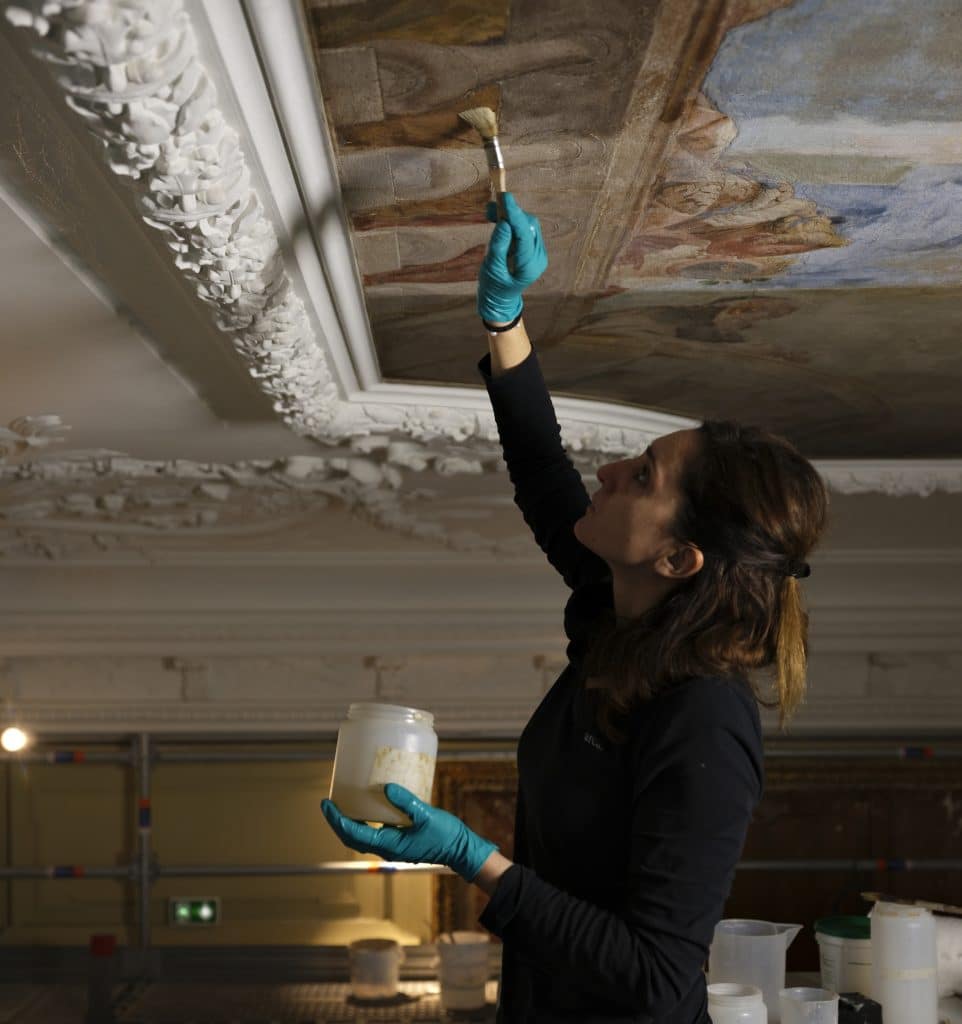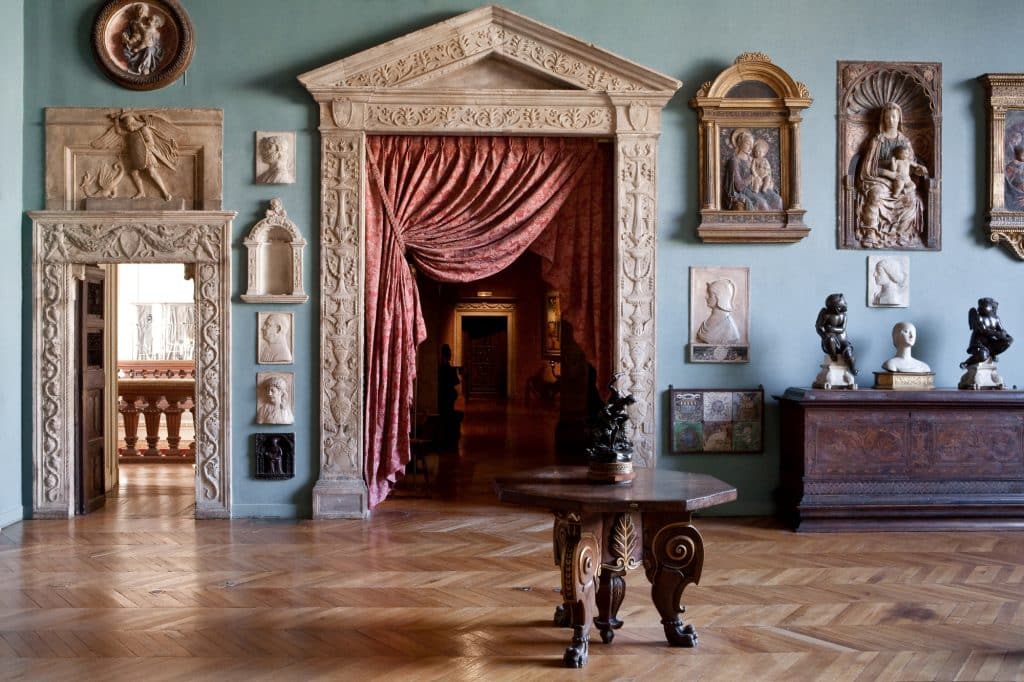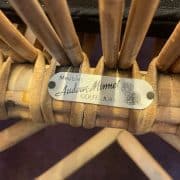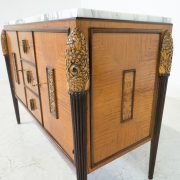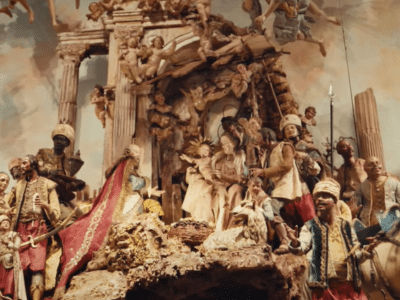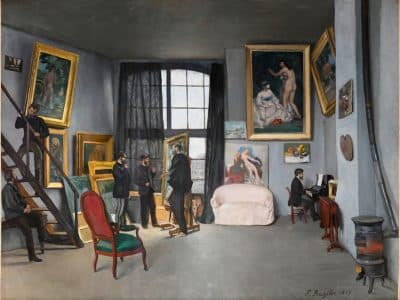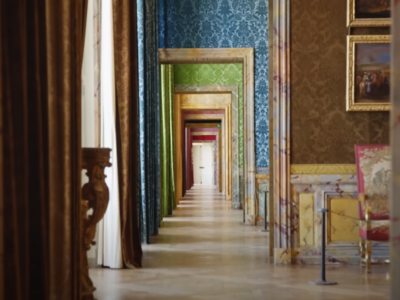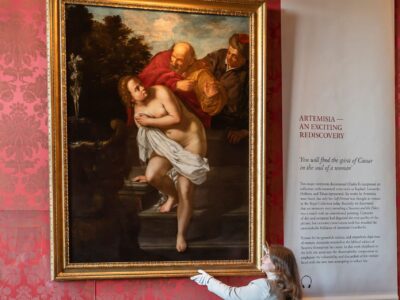For a dazzling show of the Italian Renaissance in Paris, you must visit the Jacquemart-André Museum. It is even more true until January 5th, 2025 as you can admire 40 masterpieces of the Borghese Gallery coming straight from Roma in a newly reopened museum after one year of restoration.
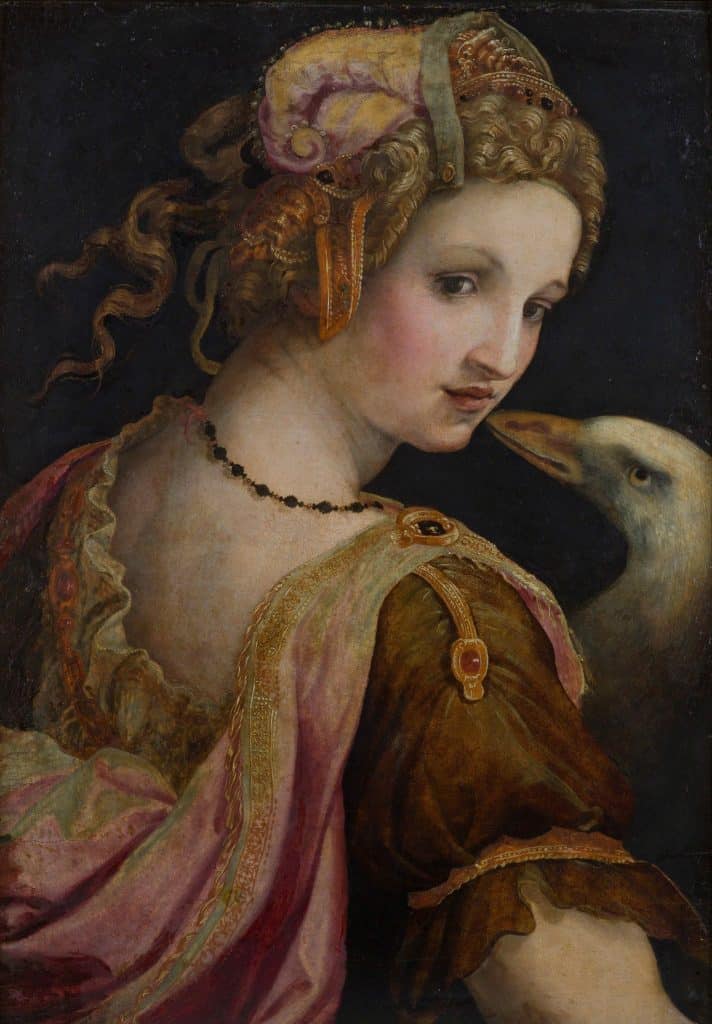
Leda by Michele di Ridolfo del Ghirlandaio. Oil on panel painted around 1565-1570. 78 x 51 cm. © Galleria Borghese
It is the first time the collection of Scipione Borghese (1577–1633) and his descendants travels abroad as a set, which is made possible thanks to the renovation currently taking place at the Galleria Borghese. Seize a unique opportunity to admire artworks from two illustrious collections perfectly complementing each other.
Scipione Borghese or the Art of Assembling an Italian Renaissance and Baroque Collection
Scipione Borghese gave free rein to his eclectic tastes. As a powerful cardinal and nephew of Pope Paul V, he accumulated paintings from various Italian old masters and schools of the 16th and 17th centuries—and some Nordic painters working in Italy, such as Rubens.
Borghese’s discerning eye in selecting artists and works of art can only make the fortunate visitors’ heads spin. Botticelli, Raphael, Titian, Veronese, Guido Reni, Parmigianino, Jacopo Bassano, and Ghirlandaio are among the selected virtuosi.
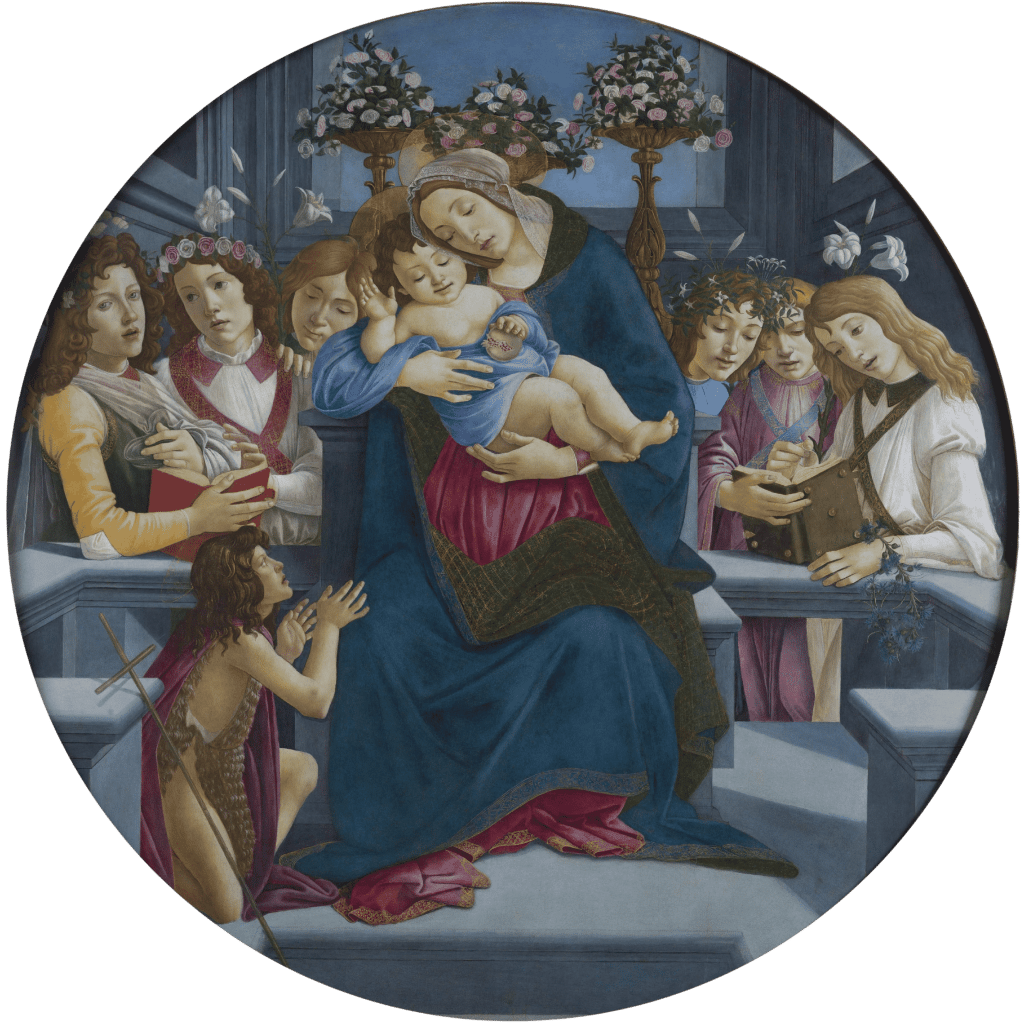
Madonna with the Child in her arms and the infant Saint John the Baptist kneeling. Six angels surround them. Tondo generally dated between 1485 and 1490. Created by Sandro Botticelli and his workshop. © Galleria Borghese
One of his first acquisitions (via the seizing of artworks from the artist Cavaliere d’Arpino by his uncle Pope Paul V) is the “Boy With a Basket of Fruit”, an early painting by Caravaggio. Scipione Borghese was ostensibly well-versed in Machiavelli, doing whatever it took to get the art pieces he had set his eyes on.
However, Borghese also acquired some Caravaggios more traditionally, as a patron. He was known to commission budding artists (for instance Caravaggio’s followers) and is particularly famous for launching Bernini. The earliest known sculpture of Bernini “The Goat Almathea” is part of the artworks presented in Paris.
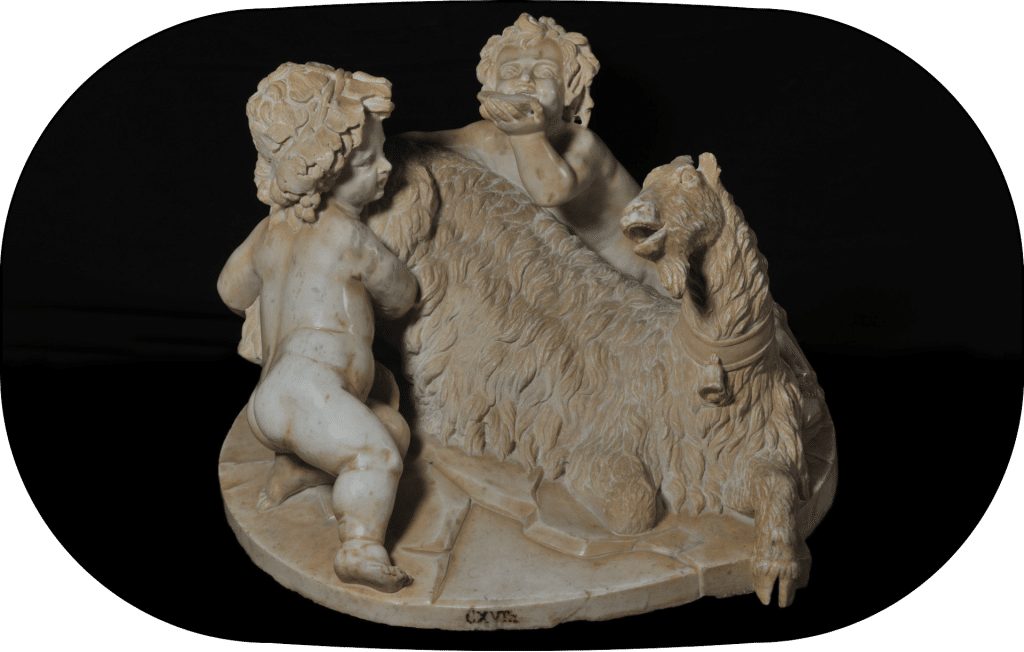
This marble sculpture would be an early work of Bernini (as it was in the Borghese collection by 1615). The goat Almathea, because related to the cornucopia, would symbolize the Golden Age brought in the wake of the Borghese. The infant Jupiter is milking the goat. The faun Pan is drinking it in a cup. © Galleria Borghese
A Restored Jacquemart-André Museum Hosting the Finest of the Renaissance, 18th and 19th Centuries
Built from 1869 to 1876 by the architect Henri Parent, the Jacquemart-André mansion was conceived from the get-go to both live in it comfortably and host a collection—an approach quite similar to the one Scipione Borghese undertook with the construction of the Villa Borghese Pinciana between 1607 and 1616.
While inspired by classical canons, the mansion architecture is also bold as illustrated by the famous double-spiral grand staircase. The winter garden, typical under Napoleon III, gives an English touch to the interiors. The furniture and decoration are luxurious and imbued with the eclecticism of that period. The 18th century is represented in its various styles with furniture by Baumhauer, Riesener, Othon, Carpentier…
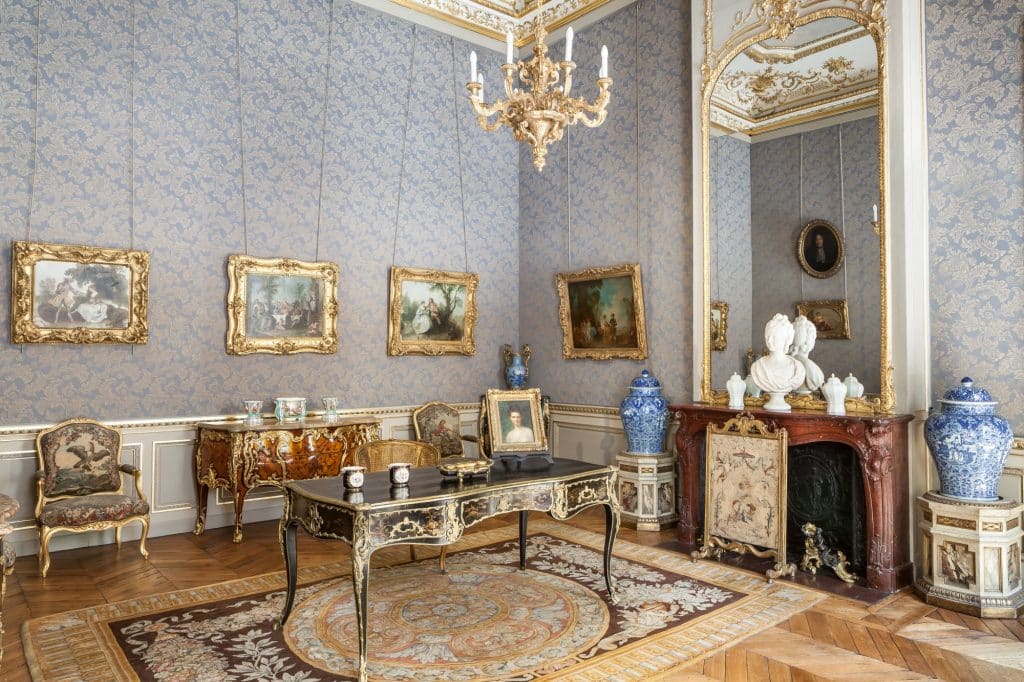
The study in the Jacquemart-André mansion. With 18th-century paintings and furniture, mostly from the Louis-XV period. Chairs by Jacques Chenevat, a desk attributed to B.V.R.B., a commode by Joseph Baumhauer. © Jacquemart-André Museum
It required over a year of closure to redevelop certain spaces and restore others. Parquet floors, woodwork, ironwork, and tapestries were given a facelift; textiles were recreated. Two majestic ceiling decors have been given a new lease of life:
- “The Announcement of the Arrival of King Henri III” fresco by Giambattista Tiepolo (c. 1745) was brought from Villa Contarini in Venetia in 1893. You can take all the time you need to admire it as it watches over you while enjoying food or drinks at “Le Nélie” restaurant and tea room.
- “The Dispute Between Minerva and Neptune Over Athens” in the smoking room is attributed to Giuseppe Porta (1520-1575), a disciple of Tintoretto.
The Borghese and Jacquemart-André: Sharing a Love for Collections
The couple Édouard André (1833-1894) and Nélie Jacquemart (1841-1912) have accumulated what is considered today the largest private collection of classical art in Paris.
These two people from different social backgrounds were united by their passion for collecting art. Nélie was a renowned painter who shared her love for Italian Renaissance art with Édouard, which explains why 15th-century Italian artists are at the heart of their collection.
In their mansion, a whole floor was devoted to the Rinascimento. Botticelli, Carpaccio, Perugino, and Mantegna are among the old masters represented there. But why stop at paintings when the Renaissance offers so much more? The collection of Italian sculptures is impressive both in its scale and in the renown of its sculptors, including Donatello, Luca della Robia, and Francesco Laurana.
Before marrying Nélie, Édouard was particularly fond of the French 18th-century, explaining why Fragonard, Boucher, Nattier, Chardin (and more artists) also left their mark in the mansion. And there is also the Flemish and Dutch collection, and… No, we will not list it all here. Certainly, you can appreciate their relentless dedication to collecting, much like the Borghese before them.
When the Italian state purchased the Borghese collection and villa in 1902, it acquired an astonishing total of 533 paintings and 263 statues. The collection had grown after Scipione’s death and was passed whole, as he wished, to other family members and descendants.
Thus, it made its way to Prince Camillo Borghese who, in the early 19th century, sold 695 antiquities to Emperor Napoleon I. They can nowadays be found in the Louvre Museum. Going there would certainly be the most sensible way to prolong your discovery of the original Borghese collection.
You May Like
Renaissance (& Middle Ages) | 18th-Century Art | 18th-Century Furniture

